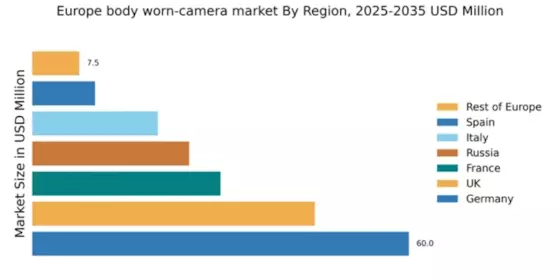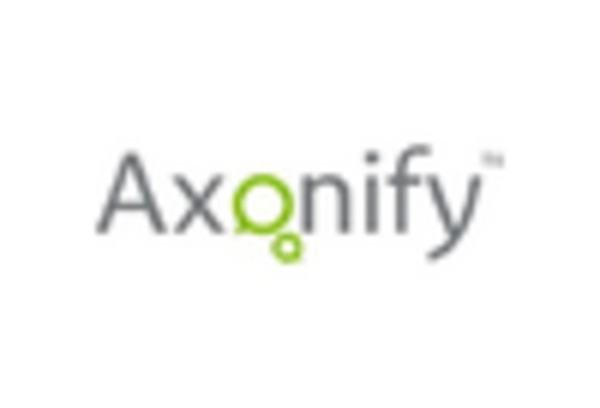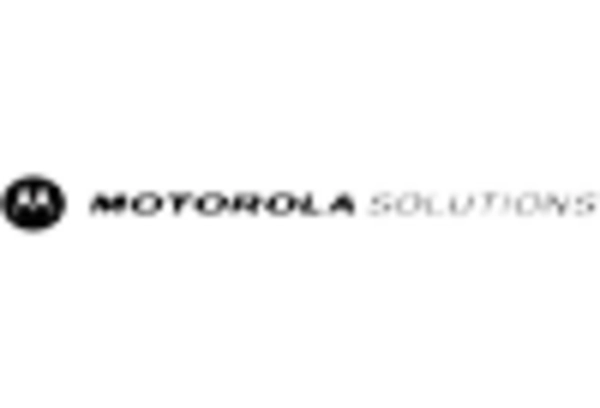Increasing Crime Rates
The rising incidence of crime across various European nations appears to be a significant driver for the body worn-camera market. Law enforcement agencies are increasingly adopting body worn cameras to enhance transparency and accountability during interactions with the public. In 2025, it is estimated that the body worn-camera market in Europe could witness a growth rate of approximately 15% annually, driven by the need for improved evidence collection and crime deterrence. This trend is particularly evident in urban areas where crime rates have surged, prompting police departments to invest in technology that can provide real-time documentation of incidents. The integration of body worn cameras into policing strategies is likely to foster greater trust between law enforcement and communities, thereby potentially reducing crime rates over time.
Public Awareness and Advocacy
The increasing public awareness regarding police practices and accountability is a crucial driver for the body worn-camera market. Advocacy groups and community organizations are actively promoting the use of body worn cameras as a means to ensure transparency in law enforcement. In 2025, this trend is likely to gain momentum as citizens demand greater oversight of police activities. The push for accountability is reflected in various initiatives across Europe, where local governments are considering policies that mandate the use of body worn cameras by police officers. This societal pressure is expected to influence funding decisions and resource allocation, thereby propelling the growth of the body worn-camera market. As public sentiment continues to evolve, law enforcement agencies may find themselves compelled to adopt these technologies to maintain community trust.
Funding and Budget Allocations
The allocation of funding for law enforcement agencies is a pivotal driver for the body worn-camera market. In recent years, various European governments have recognized the importance of investing in technology that enhances policing capabilities. In 2025, it is projected that increased budget allocations for public safety initiatives will lead to a surge in body worn camera purchases. This financial support is often tied to broader crime reduction strategies and community safety programs. As agencies receive grants and funding from governmental bodies, the procurement of body worn cameras becomes a feasible option. This trend indicates a growing recognition of the value that body worn cameras bring to law enforcement, not only in terms of operational efficiency but also in fostering public trust and accountability.
Growing Focus on Officer Safety
The increasing emphasis on officer safety is driving the adoption of body worn cameras within the body worn-camera market. As law enforcement agencies prioritize the protection of their personnel, the use of body worn cameras is seen as a tool to mitigate risks during confrontational situations. In 2025, it is anticipated that the market will continue to grow as agencies recognize the dual benefits of enhancing accountability while simultaneously safeguarding officers. The presence of cameras can deter aggressive behavior from suspects, thereby potentially reducing the likelihood of violent encounters. Moreover, the documentation provided by these devices can serve as critical evidence in investigations, further supporting the safety and legal protection of officers in the field.
Technological Integration in Law Enforcement
The integration of advanced technologies into law enforcement practices is a notable driver for the body worn-camera market. Innovations such as artificial intelligence, cloud storage, and real-time data analytics are enhancing the functionality of body worn cameras. In 2025, the market is projected to expand as agencies seek to leverage these technologies for improved operational efficiency. For instance, the ability to automatically upload footage to secure cloud platforms allows for easier access and management of video evidence. Furthermore, the incorporation of AI can assist in identifying critical incidents and streamlining the review process. This technological evolution not only enhances the effectiveness of body worn cameras but also aligns with the broader trend of digital transformation within law enforcement agencies across Europe.


















Leave a Comment